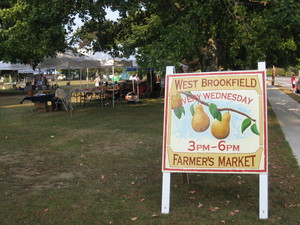20 Jan Fri 2012
Victory Gardens....For Home and Country
Gardening, to some, is a therapeutic and deeply satisfying pastime.To others it is a full-time job.But during WWII it was a way to show your support for the war effort while providing healthy food for your family and friends.Planting a garden and sharing or preserving your harvest was downright patriotic.Unfortunately, many wars have been waged since the end of WWII but our citizens have never been asked to “Dig on For Victory” or “Sow the Seeds of Victory” again.
The concept of a Victory Garden, also called a war garden or food garden for defense, first appeared in 1917 when Charles Lathrop Pack organized the National War Garden Commission and launched the war garden campaign.With many of the country’s resources going towards the war effort, the citizens of the U.S were asked to help in any and every way they could.They purchased war bonds, conserved raw materials, recycled and planted victory gardens.A popular U.S slogan during war time was “Our food is fighting” and during the height of the campaign, more than 20 million victory gardens were planted.
War gardens were planted everywhere…backyards, abandoned lots, city rooftops...and came in many different shapes and sizes.Even Eleanor Roosevelt planted one on the White House grounds.Plots were cultivated in Golden Gate Park, in the Riverside District of NYC and in Boston at the Back Bay Fens(one of the last original victory gardens still in operation).These gardens produced an estimated 9-10 million tons of fresh fruit and vegetables which equaled approximately40% of all the vegetables consumed nationally.With the citizens taking charge of their food production, more supplies were able to be shipped to troops around the world.Food really was helping to fight the war!
Victory gardens were promoted in magazines and newspapers on a regular basis.Women’s magazines were filled with instructions on how to grow and preserve garden produce.Families were encouraged to can their own produce so that more canned goods could be sent to the troops.Pressure cookers/canners were in great demand and in 1943, 315,000 canners were sold vs. 66,000 the year before.Gardening and canning was touted as a fun, patriotic family event.
When the war ended, so did the government’s promotion of victory gardens.Many people chose to not plant a garden during the spring of 1946 in expectation of greater produce availability.That did not occur, however, because the agricultural industry had not yet returned to full production.By the summer of 1946, food shortages plagued many communities across the nation.
Victory gardens are now a thing of the past.Agricultural practices have changed dramatically since WWII with small family farms being replaced by large corporate farms and time proven tillage methods being overshadowed by mechanization and petrochemicals.Today though, more people are taking an interest in the quality of the food they eat and even more are embracing the concept of self-reliance.Who knows?Maybe in the future folks will come together once again to plant gardens, produce food and do what they can to create a strong sustainable economy right in their own backyard.
Info taken from:
http://en.wikipedia.org/wiki/Victory_garden
http://www.livinghistoryfarm.org/farminginthe40s/crops_02.html
http://www.vintageveggies.com/TheVictoryGarden/page2.html

